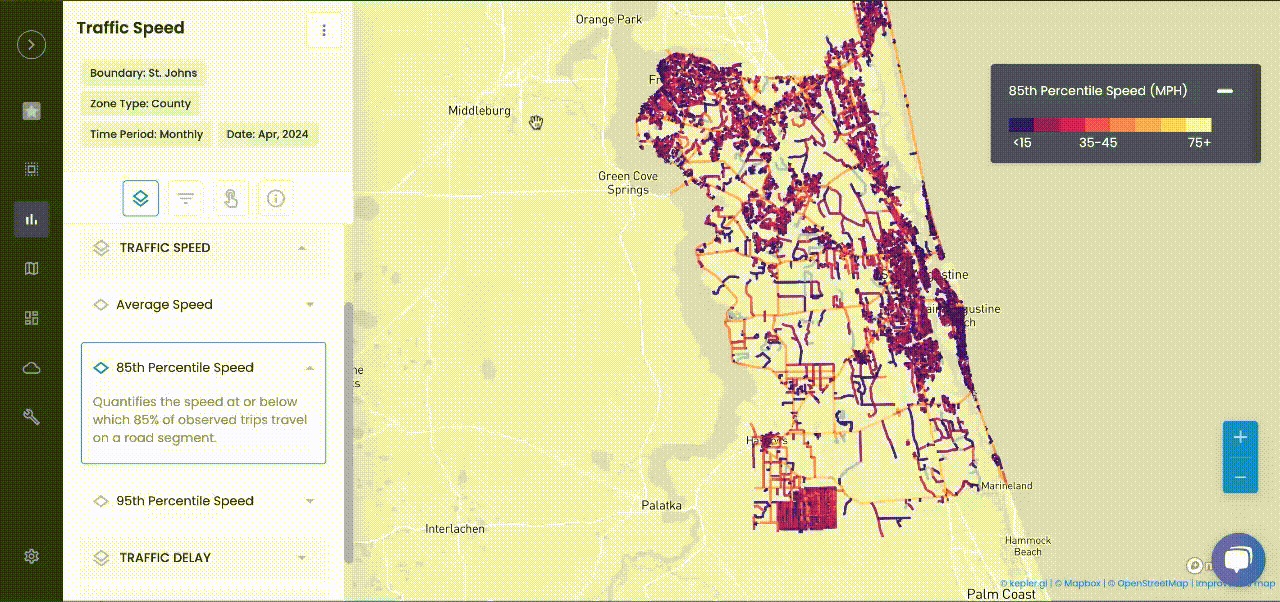
Transportation Planning
Improving Road Safety with V2X: How Connected Cars Prevent Crashes
See how V2X technology helps connected cars prevent crashes with real-time alerts, collision avoidance, and pedestrian safety features.
See how V2X technology helps connected cars prevent crashes with real-time alerts, collision avoidance, and pedestrian safety features.
One of the most powerful benefits of V2X technology is how it can really improve road safety. By letting connected cars talk with each other and things like traffic signals and pedestrians, V2X gives us a complete view of what's happening on the road. This tech helps stop accidents before they even happen. The U.S. National Highway Traffic Safety Administration (NHTSA) says that using V2X safety features could cut down or even stop around 80% of crashes not involving impaired driving. This could mean avoiding 615,000 crashes and saving 1,366 lives yearly in the U.S. It’s all about giving drivers early warnings about dangers that might slip by human senses or regular sensors.
Connected cars act like each other’s eyes and ears. They constantly share info like speed and location within about 300 meters, creating a kind of awareness network. For instance, if a car in front suddenly hits the brakes or slides on ice, that car sends a heads-up to others nearby. Following cars get the alert and can react quicker than a human driver would by just seeing it. That way, they can avoid a chain reaction crash. Unlike standard sensors that can get blocked by things like poor visibility, V2X messages work all around and can notice dangers even if they're hidden, like knowing a fast car is coming up to an intersection that isn't in plain sight. This gives drivers or safety systems those critical extra seconds to dodge a potential accident.
Here are some real-life safety situations made possible by V2X:
- Intersection Collision Avoidance: Cars getting close to an intersection share their paths with each other. If one vehicle is about to run a red light or turn into another's way, V2V (vehicle-to-vehicle) alerts can let both drivers know ahead of time. This gives them a chance to brake or steer clear before any collision might happen. This kind of connection helps deal with one of the riskiest crash types – accidents at intersections – by spotting conflicts that drivers might not catch in time.
- Emergency Braking Alerts: As mentioned, when a car up ahead brakes hard or hits a hazard, it sends out a warning to cars behind. Even if visibility is low like at night or during fog, cars you can't see can still warn about dangers ahead. This connected electronic brake light reduces the time drivers take to react and helps prevent rear-end collisions on highways.
- Pedestrian and Cyclist Safety: With V2P (vehicle-to-pedestrian) communication, cars can spot people in crosswalks or cyclists in blind spots using their smartphones or wearables. Drivers get alerts if someone is in their path, even if they are hidden from view. At the same time, a pedestrian could receive a warning from their phone about an approaching car when they get near a street. This back-and-forth communication can really save lives, especially given that almost 270,000 pedestrians die in traffic accidents worldwide each year.
- Hazard & Weather Warnings: V2X messages aren't just for cars; infrastructure and other entities send them too. For example, a connected traffic light or road sensor can warn about an accident or road work ahead, helping vehicles to slow down safely before they reach the danger. If a car detects icy roads, it can share that info with other drivers through a Decentralized Environmental Notification Message (DENM), letting nearby drivers know about slippery conditions.
With V2X technology acting like a constant co-pilot that never gets sidetracked, we can significantly cut down on crashes caused by human error. The U.S. Department of Transportation points out that this communication network works like a 360-degree sensor for spotting dangers, bringing us closer to a future without accidents. Each message sent is secured, so drivers can rely on the alerts they get.
To sum it up, connected cars using V2X help create a safer road environment by spotting risks and alerting drivers (or their safety systems) so they can act before something goes wrong. The more vehicles and intersections that get connected, the better it gets – leading to fewer accidents, fewer injuries, and a safer ride for everyone.

TRAFFIC ENFORCEMENT FEATURES
80% of citizen complaints
are a perception problem
Urban SDK provides precise hourly speed data to evaluate complaints and deploy resources efficiently for the greatest impact to public safety.
Urban SDK provides precise hourly speed data to evaluate complaints and deploy resources efficiently for the greatest impact to public safety.
Target Speeding
Identify hot spots, validate monthly speeding trends and monitor vulnerable areas like school zones.
Improve Safety
Crash and citations location information to compare speed trends month over month
Fast Response
Respond to citizen complaints sooner with address search and exportable reporting
Deploy Assets
Generate maps for traffic enforcement by time of day, location or division to deploy officers to known problem areas.
RESOURCES
Customer Success
See how public sector leaders succeed with Urban SDK.
WEBINAR
Identify speeding and proactively enforce issues
See just how quick and easy it is to identify speeding, address complaints, and deploy officers.







